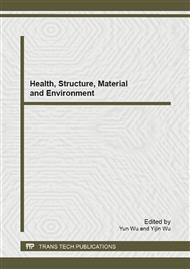p.159
p.164
p.168
p.172
p.177
p.185
p.190
p.194
p.198
Investigation Analysis on Guangzhou Huangbu Village Conservation Plan and Situations after its Implementation
Abstract:
In a city with rapid urbanization and profound history and culture like Guangzhou, conservation for urban village is facing grim challenges. Taking Guangzhou Huangbu Village as a typical case, the paper is based on site investigation on periods before and after conservation of Guangzhou Huangbu Village by research means of literature collection, onsite investigation, induction and deduction etc. The paper proposes conservation planning under current situations and typical issues after implementation of construction, and analyzes the reasons for the issues in an objective fashion. The study offers good reference to urban village construction in China in the current stage. Huangbu Village is located in the east of Xinyao Town, Haizhu District, Guangzhou. As recorded by literature, ancient Huangbu Village was first built no later than Song Dynasty. With Bazhou Island on the west and Zhujiang Waters on the east, the Village was a natural harbor back in Song Dynasty, and an important port for foreign trade in Ming Dynasty. During the reign of Emperor Kangxi in Qing Dynasty, Guangdong Customs set up nine landing ports, and Huangbu Village is one of them. In the 22nd year of Emperor Qianlong's reign in Qing Dynasty (1757), only one port of Guangdong Customs was retained for trade, Huangbu Port flourished as the most important port for foreign trade at that time, bringing fast economic development for Huangbu Village as well. However after Treaty of Nanjing was signed, five ports were opened for trade, and with the relocation of Huangbu Registration Port, Huangbu Village also experienced a recession, changing from commercial trade based to natural agriculture based economy, and the once-flourishing town has descended to a common village. Today ancient port, fairly complete streets, ancestral temples, former residence of celebrity and other traditional Huangbu residences have been preserved, which are of high historical, art and scientific values. In July 2002, Guangzhou People's Government announced it to be the sixth batch of listed cultural relic site under conservation [1].
Info:
Periodical:
Pages:
177-184
Citation:
Online since:
February 2013
Authors:
Keywords:
Price:
Сopyright:
© 2013 Trans Tech Publications Ltd. All Rights Reserved
Share:
Citation:


